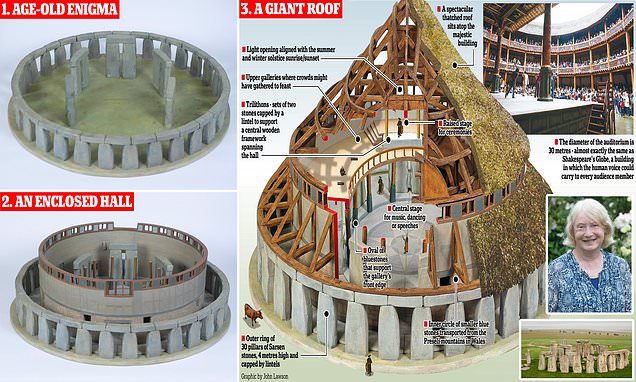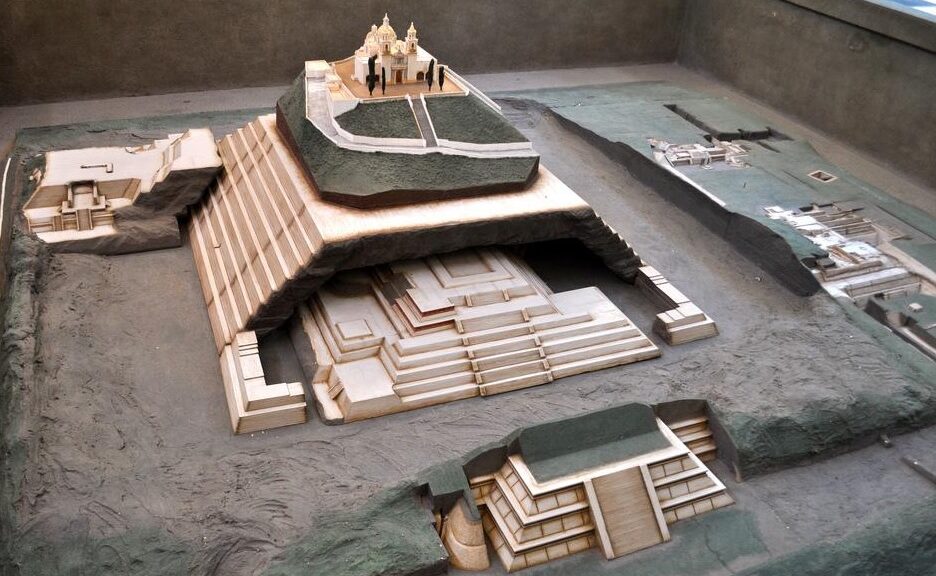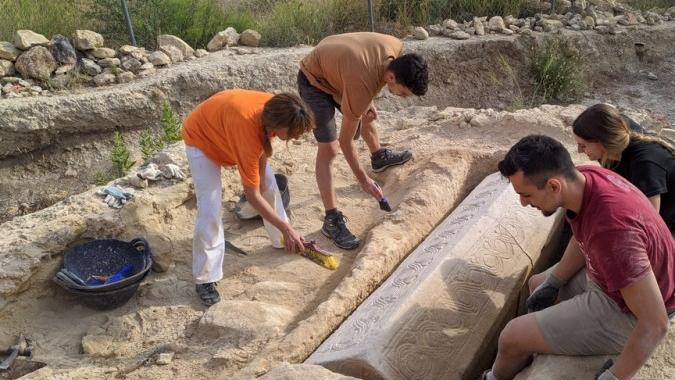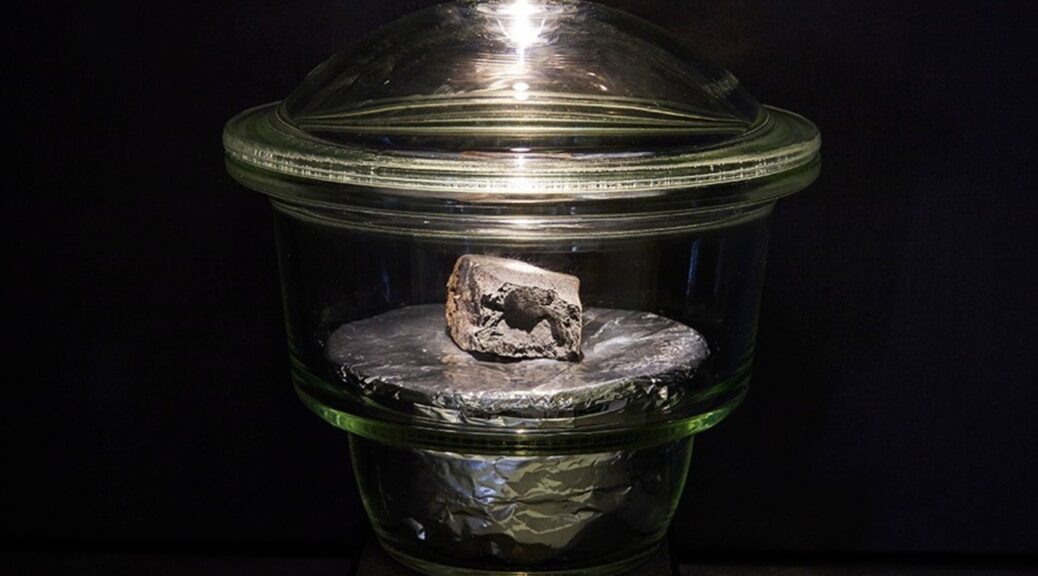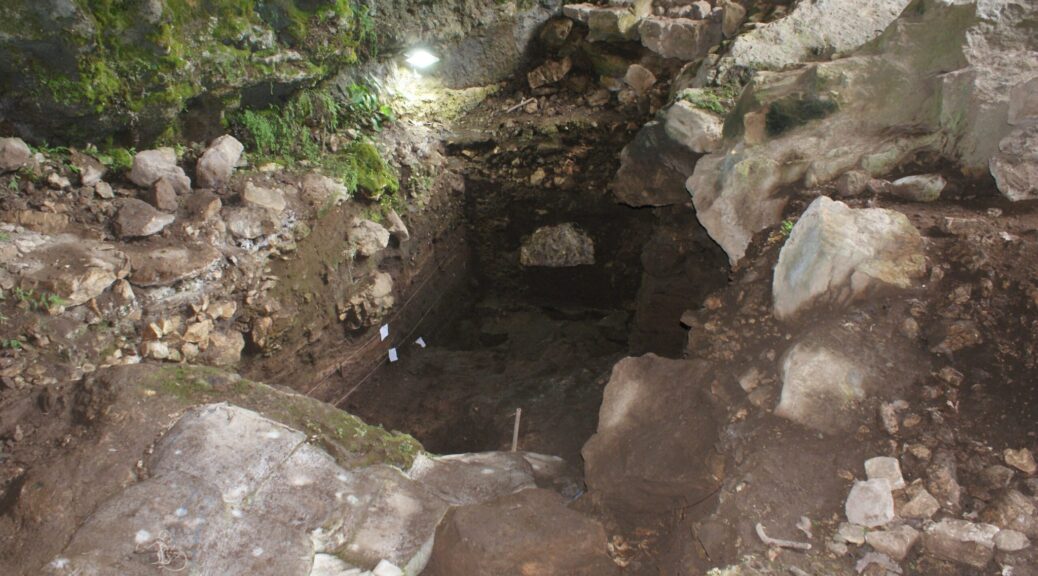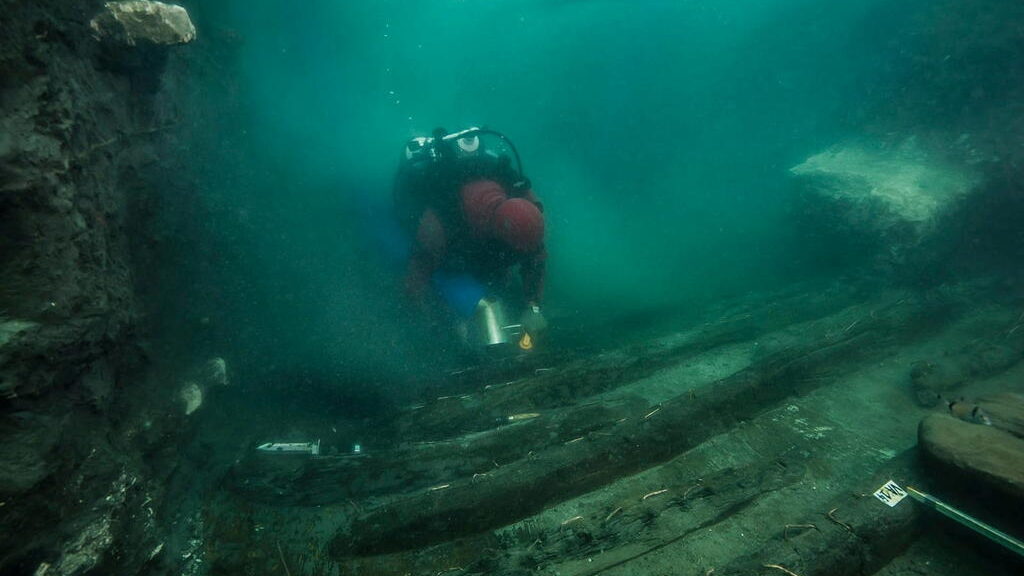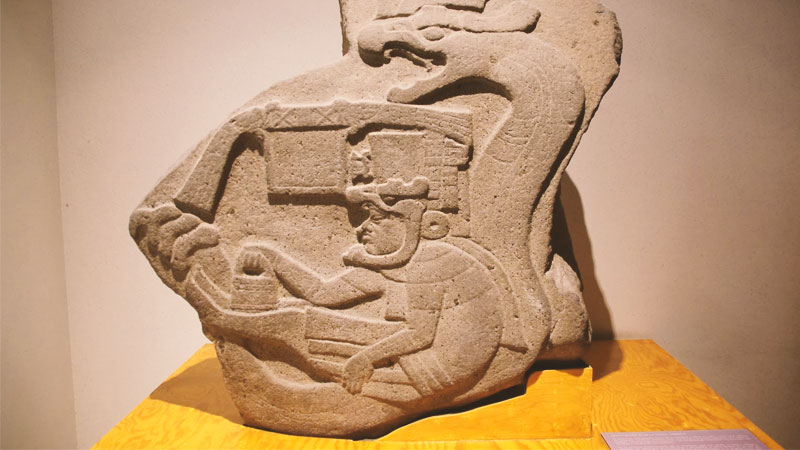The architect believes Stonehenge once had a thatched roof to form the temple
One of the biggest mysteries surrounding Stonehenge is how any of it is still standing, given the predations of souvenir-hunters and vandals including the great 17th-century architect Sir Christopher Wren. He paid many visits to the ancient monument on Salisbury Plain and his surname can still be seen carved on one of its stones.

The Victorians were even more destructive, renting chisels to visitors so they could take great chunks of Stonehenge home, and over the centuries farmers purloined stones for building their barns. Perhaps they might all have had more respect for the monument, now a Unesco World Heritage site, had they heard the extraordinary theory being put forward in a new book by 62-year-old landscape architect Sarah Ewbank. She would have us believe that the Stonehenge we see today represents the ruins of a majestic building that once had a spectacular thatched roof. As mind-boggling as contemplating an upright Tower of Pisa or a Day-Glo Taj Mahal, this may seem as barking as other ideas expounded about Stonehenge over the centuries: that its layout was based on the female private parts, or that it was a site of human sacrifice or a landing pad for aliens.
But Sarah is deadly serious, and she backs up her arguments with the rather ferocious electric saw she keeps in the garage of her pretty Cotswolds cottage near Lechlade, Gloucestershire. The feisty grandmother does not use this to intimidate those who disagree with her — although she is rather frustrated with the academics who have repeatedly refused to engage with her idea that Stonehenge was a Neolithic version of the Royal Albert Hall.
No, the saw is used to fashion ever-more detailed models of how she thinks Stonehenge might have looked. Each has taken about two months to complete and they have got bigger each time. While three earlier models have been banished to the attic, version four is currently taking pride of place in the dining room. Built on a scale of 1:33, it is surprisingly persuasive. The moment you see the familiar stone slabs as the supports for an upper storey you think ‘Ah, yes, of course it was a building. What else could it have been?’

As to what kind of building, Sarah thinks it was an all-purpose Neolithic temple with a large oval hall overlooked by galleries in which crowds might have gathered to hear speakers below.
She points out that the total diameter — some 30 metres — is almost exactly the same as Shakespeare’s Globe, a similarly thatched building in which, several millennia later, the human voice could carry to every audience member.
‘It is unquestionably the right size for an enclosed public venue,’ she says, speculating that the scenes at Stonehenge might have been as boisterous as in Elizabethan times.
‘Maybe there was feasting in the galleries, with dancing and musicians playing below, or perhaps ceremonies took place to welcome in the solstices. It all sounds rather splendid.’
It does indeed, and Sarah contends that archaeologists have under-estimated our Neolithic and Bronze Age forebears who built Stonehenge over centuries, years starting around 5,000 BC.



‘They have assumed they were rough, tough, types who had advanced little from grunting cavemen and were hardy enough to worship outdoors. But we know that the Bronze Age was sophisticated enough to have goldsmiths making absolutely stunning jewellery and they knew how to make copper alloys like bronze.
‘It seems obvious to me that they would have wanted to mark the winter solstice inside, under a roof, not outside in the freezing cold.’ It has taken five years for Sarah to develop her theory with the support of Crispin Scott, a 65-year-old retired Army officer who is her partner of 14 years. They are both divorced, with five grown-up children between them, and Sarah has fitted in her research around her work and their shared hobby of bell-ringing.
‘Initially, Cris couldn’t understand why I was doing it. But as I got more into it, he realised that I was on to something,’ she says.


Her interest was first sparked when she saw a TV documentary about new excavations at Stonehenge. ‘I wondered: “Why to keep digging down instead of looking up?”
‘I could see its slabs were of a suitable size to be support piers for a roof and wondered if their layout held clues that would reveal its shape.’
Designing landscapes for more than 40 years, she’s been involved in consultancy and planning for everything from historic estates to Oxford colleges. But this task involved throwing her brain into reverse. Instead of creating a design from scratch, she was trying to deduce what a design might have been from the four concentric formations of stones that make up Stonehenge: an outer and an inner circle, a horseshoe and an oval. None is complete, and indications of where the missing stones once stood have been identified by archaeological investigations.
These suggest that the outer ring consisted of 30 pillars of grey sarsen stone, each about four metres high, somehow transported from quarries on the Marlborough Downs, about 20 miles away. Sarah points to other famous historic buildings — most notably the Parthenon in Athens — whose roofs are supported by similar columns. ‘It’s a common building form,’ she explains.

It’s believed that these pillars were all originally capped by horizontally placed stones known as lintels. Where these are missing it’s possible to see two knobs on top of each pillar which would have been slotted into two corresponding holes in the bottom of the lintels. Since gravity alone would have been enough to hold the lintels in place, Sarah argues that the knobs and sockets would not have been necessary unless they were supporting something.
‘Their existence suggests that the sarsens’ uprights and lintels were engineered as if to take the load of a roof,’ she says.
While the sarsen stones would have formed an outer colonnade, a wraparound walkway covered by the roof but open to the elements, Sarah believes it’s logical that the hall would have had a wall to give protection from the weather. According to her, the remains of the doorways within that wall can be seen in Stonehenge’s inner circle, made up of smaller bluestones transported from the Preseli mountains in Wales, some 150 miles away.

Before metal hinges were available, doors were jointed onto pivoting vertical poles that turned when the door was open or shut. One of the bluestone uprights contains a vertical groove into which such a pole would have fitted perfectly, while the two bluestone lintels remaining contain holes which Sarah thinks may have been used to secure a wooden board containing sockets for the door-poles.
Moving towards the centre of Stonehenge, the next formation is a horseshoe of four trilithons — sets of two stones capped by a lintel — with another taller trilithon at the end. Sarah suggests that all were supports for a central wooden framework spanning the centre of the oval hall, with rafters radiating downwards to the outer circle of sarsen stones to support the roof’s lower slopes.

In her view, Stonehenge’s builders would have known exactly how to build the central wooden cradle she posits as holding up the roof because it resembles a large upturned boat. Her final challenge was to find a purpose for the oval of bluestones at the centre of Stonehenge. She concludes that these supported columns held up the balcony. While her fourth model shows this being reached via a spiral staircase, she admits that this is pure guesswork. But she is more confident that our Neolithic predecessors were capable of high-quality carpentry using oaks from the woodlands which covered about a third of Great Britain.
All this begs a question. If Stonehenge really was a building, then how on earth did they go about constructing it?
Using her experiences of shifting weighty objects with very limited resources, Sarah imagines an ingenious arrangement for raising Stonehenge’s wooden trusses, the largest of which she estimates as weighing 20 tonnes. This involves building a high platform on which each truss could be laid flat, with one end butting the top of the lintel before being hoisted upright with ropes.
So what do the experts make of all this? Over the years, Sarah has asked but received no real replies.
‘I would like to sit down and have a sensible conversation with them, but it seems anything challenging the view of a broad consensus of current archaeologists is routinely rejected,’ she says,.
But English Heritage is unlikely to be entering such discussions any time soon. ‘The idea of a roof on Stonehenge wouldn’t make any sense,’ says the monument’s curator, Heather Sebire.
‘Part of the point of the place is the majesty of the stones, so why would you put a roof on them? The bottom line is that there isn’t any evidence for it.’
This doesn’t sit well with Sarah. ‘Just because something hasn’t survived, doesn’t mean it didn’t exist,’ she says, and her book certainly makes a plausible case that the roof on Stonehenge did exist. One thing is certain. Given the huge distances over which the stones had to be transported by land, the construction of Stonehenge was an astonishing technical accomplishment — with or without a roof.
